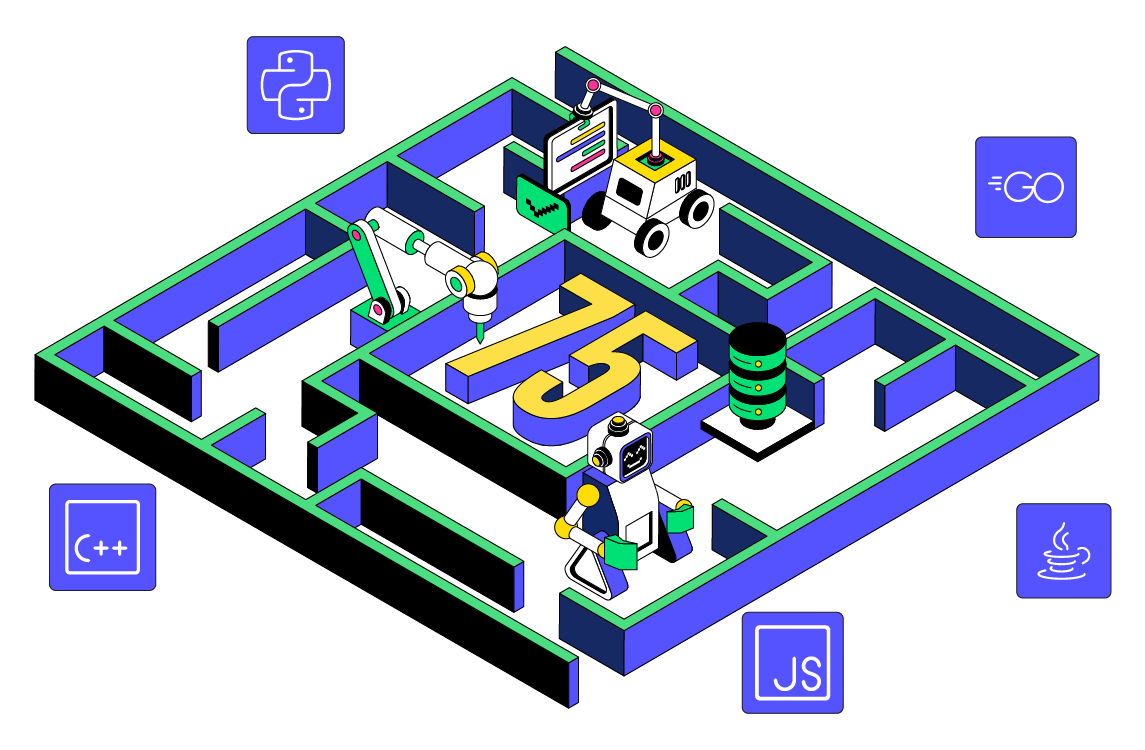Think you’re ready for your coding interview?
Blind 75 will make sure you are.
Blind75
Blind 75 Questions with Solutions
Blind 75 Questions with Solutions

Learn the Two Pointers technique and related patterns to efficiently solve array, string, and linked list problems.
Write a function that accepts a string s as input and checks whether it is a palindrome.
Build a strong foundation in fundamental data structures like arrays, stacks, queues, and hash maps.
Learn and apply tree depth-first search, tree breadth-first search, and backtracking patterns to efficiently solve problems.
Given a binary tree, return an array representing its level-order traversal. Each level's node values should be stored in separate sub-arrays, ordered from left to right.
Use heaps, hashing, and efficient tracking techniques to optimize search, sorting, and frequency counting.
Combine problem-solving techniques like merge intervals and K-way merge patterns to tackle coding interview problems.
Given a sorted list of nonoverlapping intervals and a new interval, insert the new interval into the correct position while ensuring that the resulting list of intervals remains sorted and nonoverlapping.
Learn advanced optimization techniques like memoization, greedy algorithms, pruning, and bit manipulation to solve questions.
In a jump game, the player starts at index 0 of an array nums and moves up to s steps, where s is the current value. Write a function to check if reaching the last index is possible, returning TRUE if yes, else FALSE.
Find out how to practice tries, graphs, cyclic sort and topological sort patterns to solve coding problems.
Implement a trie data structure with three functions that perform Insert (word), Search (word), and Search prefix (prefix).
Practice the bitwise manipulation, sliding window, and union find patterns to crack coding interview problems.
Create encode to convert a string array into a single string for transmission. Create decode to restore the original array from the encoded string.
It strikes the perfect balance between breadth and depth.
It emphasizes repetition and mastery over quantity.
It’s structured to cover every major data structure and algorithm pattern you’ll likely encounter.
Round 1: Solve all 75 questions with time and patience. Focus on understanding the “why” behind each solution.
Round 2: Redo questions without looking at previous answers. This tests true recall and retention.
Round 3: Solve under timed conditions to simulate interviews.
Round 4+: Study alternate solutions, optimize code, and discuss in forums or mock interviews.
Identify where a two-pointer approach can cut complexity in half.
Apply the sliding window method to track state within a range.
Master binary search variants on sorted arrays and answer ranges.
Build recursive and iterative backtracking solutions.
Tackle dynamic programming problems with state transitions.
Understand graph traversal using DFS, BFS, and topological sort.
Learn to spot opportunities for greedy choices and memoization.
Use heaps and priority queues for optimized selection and ordering.